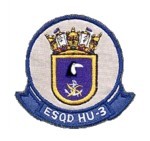US Marines Help Japan Build Amphibious Force

Troops steer amphibious assault vehicles toward shore during a simulated beach assault during Rim of the Pacific Exercise 2014 in July. (U.S. Navy Photo)
Stars and Stripes | Aug 08, 2014 | by Seth Robson and Chiyomi Sumida
YOKOTA AIR BASE, Japan — The U.S. Marine Corps on Okinawa has spent more than two years helping Japan stand up an amphibious force geared toward defense of islands in the East China Sea, according to U.S. and Japanese officials.
Members of the Japan Ground Self Defense Force have been observing and participating in amphibious training with U.S. Marines on Okinawa since 2012, U.S. and Japanese officials said in response to questions about the force. The training — off limits to media — is part of Japanese efforts to develop, in the next five years, an amphibious capability that includes new helicopter carriers and landing craft, along with a 3,000-strong army unit modeled on the U.S. Marine Corps.
The buildup has been taking place amid tensions in the East China Sea, where China has challenged Japan’s claim to the Senkaku Islands (known as Daioyu by the Chinese) and nearby the oil and gas resources.
As part of that buildup, more than 200 Japanese soldiers practiced amphibious landings at Camp Pendleton, Calif., with U.S. Marines in the Iron Fist exercise in February. Then, Japanese troops stormed beaches in Hawaii during last month’s RIMPAC exercises.
Additionally, 30 Japanese troops from the 12th Infantry Regiment out of Camp Kokubu in Kagoshima prefecture were on Okinawa from June 23 through Thursday observing and taking part in U.S. amphibious training, according to a Japanese Defense Ministry spokesman.
The Japanese platoon had been working with 3rd Battalion, 5th Marines, 31st Marine Expeditionary Unit, Capt. Garron Garn, a public affairs officer with the Okinawa-based 31st Marine Expeditionary Unit said.
The Japanese have been watching the Marines train with a variety of aircraft, rubber raiding boats and amphibious assault vehicles. They’ve also practiced swimming and martial arts together.
It is the third group of Japanese troops to do amphibious training alongside the U.S. Marines, Garn said.
The training — under the auspices of the Japanese Observer Exchange Program — allows the Japanese to observe small-unit tactics and amphibious operations as well as enhance their ability to operate alongside U.S. forces, he said.
Operating from amphibious ships requires a lot of planning, coordination, synchronization, and communication, Garn said.
“There are numerous challenges inherent to amphibious operations, from unpredictable weather to coordinating the efforts of literally thousands of Marines and sailors,” Garn said. “The integration with JGSDF soldiers demonstrates the continued commitment of the United States and Japan to increasing interoperability of our militaries and maintains a strong partnership to enable a bilateral response to future challenges.”
The training has, for the most part, been conducted in and around U.S. facilities on Okinawa, although Japanese troops did embark on U.S. amphibious ships in 2012 and participated in an exercise on Guam in past years. The Japanese may increase the size of the force training with the Marines for future iterations, Garn said.
A Japanese Defense Ministry spokesman said JGSDF troops are most interested to learn the landing skills and boat handling that might be needed to defend an outlying island. Japan’s fiscal year 2014 defense budget included funding to establish an “Amphibious Rapid Deployment Preparatory Unit,” with about $3 million earmarked for enhancing the amphibious capabilities of two Osumi-class transport vessels and an Izumo-class destroyer, the spokesman said.
The SDF also purchased four amphibious assault vehicles, each capable of transporting 25 troops, from the U.S. in 2013. And, this fiscal year — which began in April — Japan plans to spend $17 million on two more amphibious assault vehicles which will be used for command and communication and vehicle recovery.
Ultimately Japan plans to acquire 52 such vehicles, the spokesman said.
Japan’s Western Army Regiment, based in Sasebo, includes 700 personnel training for amphibious operations, but the goal is to produce a 3,000-member amphibious force, Defense Minister Itsunori Onodera said in comments provided by the Defense Ministry.
“We hope to establish the amphibious force as soon as possible,” Onodera said, during a visit to the regiment’s headquarters, Camp Ainoura, in March. “We will continue to develop talented personnel and prepare for the formation of said force making use of the past experience at Camp Ainoura and through joint exercises with the U.S. side, especially the U.S. Marine Corps.”
The force will have two major tasks, he said.
“Japan has numerous islands including many remote islands,” he said. “As they are the basis for Japan’s exclusive economic zone, which is the sixth-largest in the world, it is vital for us to defend them.”
The amphibious force will also be helpful in disaster relief operations.
Japan has yet to determine where its amphibious force will be based.
“So far, from the perspective of the defense of remote islands, we are considering either Kyushu or the southwestern region,” Onodera said.
Where the amphibious force will train in Japan is also uncertain, although there are plans to continue to joint exercise with the U.S. Marines in California and on Guam, the Defense Ministry spokesman said.
http://www.military.com/daily-news/2014 ... force.html 












